Parenting in the digital age presents both opportunities and challenges, especially when it comes to managing Screen time rules to engage with your child. Used thoughtfully, screen time can actually strengthen the parent-child bond and support your child’s language development, fine motor skills, and critical thinking.
Here, we’ll explore 12 practical, research-backed rules to help you make screen time a valuable experience, filled with interaction, learning, and quality engagement.
Benefits of Screen Time Rules for Parents and Children
Understanding the potential of screen time and the benefits it can bring when used intentionally will help you approach it with confidence and ease:
- Enhanced Bonding: When parents use interactive techniques during screen time, it creates unique one-on-one moments, helping children feel noticed and heard.
- Supports Developmental Skills: Intentional screen time aids cognitive development and language skills, especially when paired with activities like counting, describing, or asking questions.
- Promotes Social and Communication Skills: Discussing what’s on screen encourages children to verbalize their thoughts and improves storytelling comprehension and vocabulary.
Note: While digital engagement has advantages, balance and moderation are essential, as too much screen time can disrupt sleep and affect physical activity. The American Academy of Child and Adolescent Psychiatry (AACAP) suggests creating a daily limit and sticking to it for better overall well-being.
Screen Time Recommendations by Age (Based on AACAP)
The American Academy of Child and Adolescent Psychiatry (AACAP) provides age-based guidelines to help parents create a healthy screen time routine:
| Age Group | Screen Time Recommendation |
|---|---|
| Under 18 months | Avoid screen time, except for video chatting with loved ones. |
| 18-24 months | Limit to less than 1 hour per day, ideally co-viewing with a parent and focusing on educational content. |
| Ages 2-5 years | Around 1 hour per day with supervision, engaging in co-viewing and interactive conversation. |
| 6+ years | Max of 2 hours per day for recreational screen time; emphasize balancing with physical play, reading, and family time. |
Screen-Free Zones: Consider designating certain times or areas, like meal times or bedrooms, as screen-free zones to encourage interaction and sleep.
12 Simple Screen Time Rules to Engage With Your Child
1. Narrate What You See on the Screen
Narration strengthens language development and helps children connect words with images. If you’re watching something like Hey Bear Sensory videos or an educational cartoon, describe what’s happening.
For example: “Look at the red ball bouncing up and down.” This not only introduces new words but also supports story comprehension.
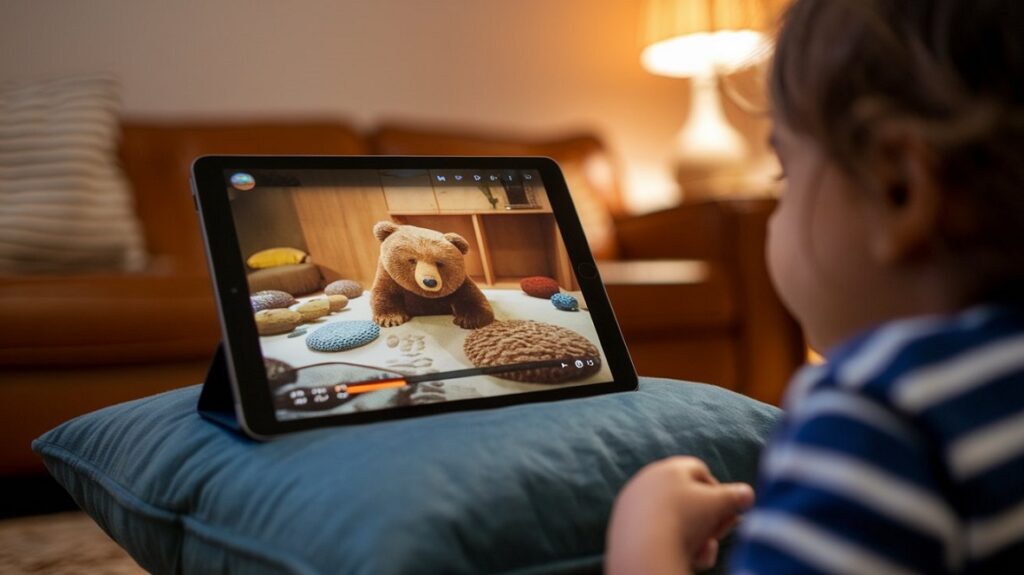
Quick Tip: Narrate actions, colors, and emotions, encouraging your child to see and hear how words describe the world around them.
2. Participate in Interactive Segments
Shows like Dora the Explorer and Blue’s Clues often feature interactive segments, where characters ask questions like, “Where’s the bridge?” By responding along with your child, you’re encouraging critical thinking and making the experience engaging.
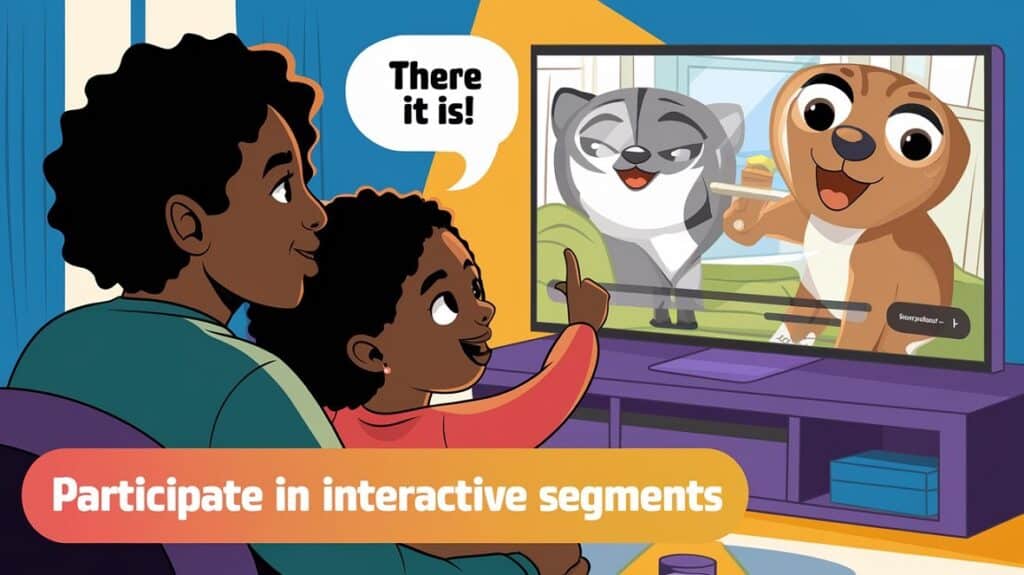
Practical Example: When the character asks, “Where is the blue butterfly?” encourage your child to point or answer, reinforcing spatial awareness and attentiveness.
3. Ask Thought-Provoking Questions About the Story
Asking questions during or after viewing encourages cognitive development and keeps your child actively involved. For instance, after watching an episode of Sesame Street or a nature documentary, you might ask, “Why do you think the rabbit hops away so quickly?”
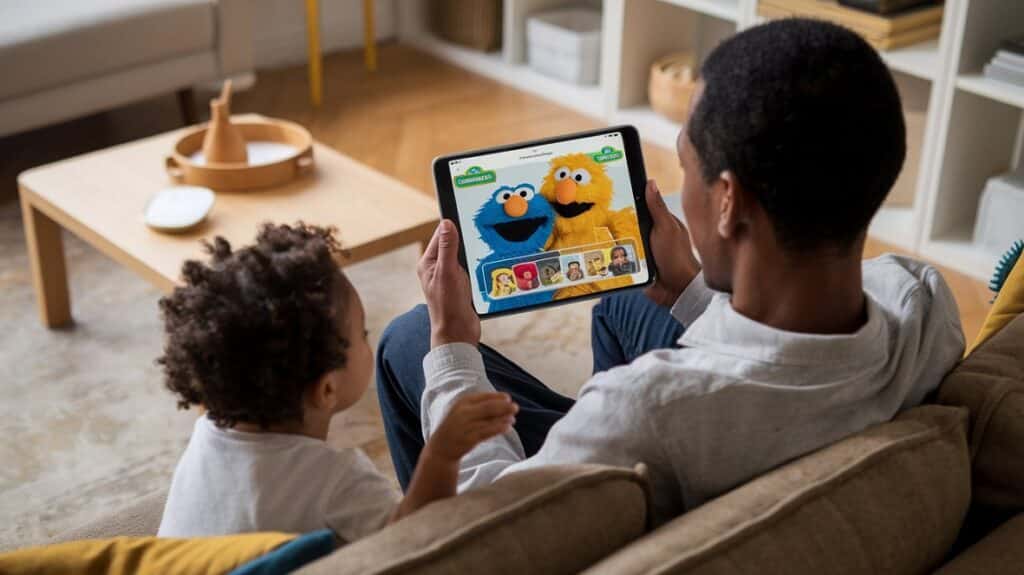
Examples of Questions:
- “What do you think is going to happen next?”
- “If you were the character, what would you do?”
- “Why do you think they made that choice?”
4. Count Items as They Appear on Screen
Counting games boost early math skills and fine motor coordination. As objects appear on screen, count them together. This could be something as simple as counting the apples in a character’s basket or tallying the number of animals in a scene.

Did You Know? Counting games help kids develop early math reasoning, promoting future numeracy skills.
5. Identify and Name Colors in Scenes
Color identification expands vocabulary and builds observational skills. For example, you might say, “Look at the big green tree,” or “What color is the bird?”
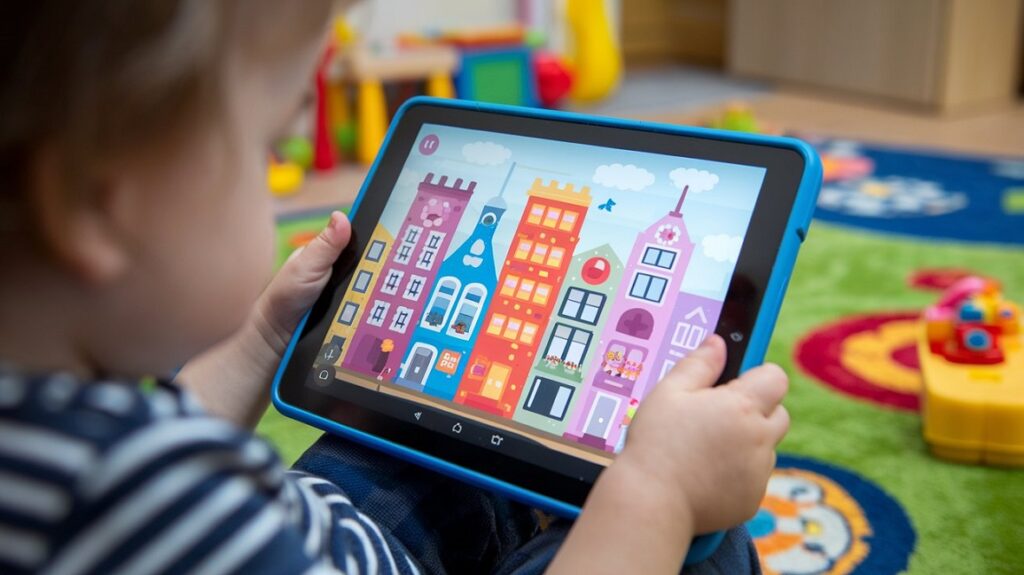
Advanced Tip: Try introducing unique color names like “aqua” or “lavender” for a more enriched vocabulary.
6. Dance or Sing Along to Music Segments
Shows that encourage dancing or singing can improve motor skills and coordination. Many kids’ programs include segments that prompt children to stand up, dance, or sing along. Dancing together also makes screen time an active and joyful experience.

Activity Idea: Make a playlist of interactive, kid-friendly songs for dance breaks. Shows like Hey Bear Sensory offer fun musical sequences that kids can move along to.
7. Answer Their Curious Questions
Children are naturally inquisitive during their curiosity phase, asking lots of questions about the world. Use this to your advantage by providing thoughtful answers that expand their understanding.

Helpful Tips for Answering Questions:
- Be patient and enthusiastic, even if they ask the same questions repeatedly.
- Give simple but complete answers to encourage further curiosity.
8. Relate On-Screen Lessons to Real Life
Applying lessons from the screen to the real world reinforces learning and retention. For example, if a show discusses animals, ask your child to relate it to animals they’ve seen in books or during a trip to the zoo.

Example Scenario:
After watching a show about recycling, discuss how your family recycles at home, building awareness and environmental responsibility.
9. Explore Their Likes and Dislikes About Shows
Exploring preferences helps children express themselves and build emotional intelligence. Ask what they enjoyed or disliked about the program, and explore why they felt that way.
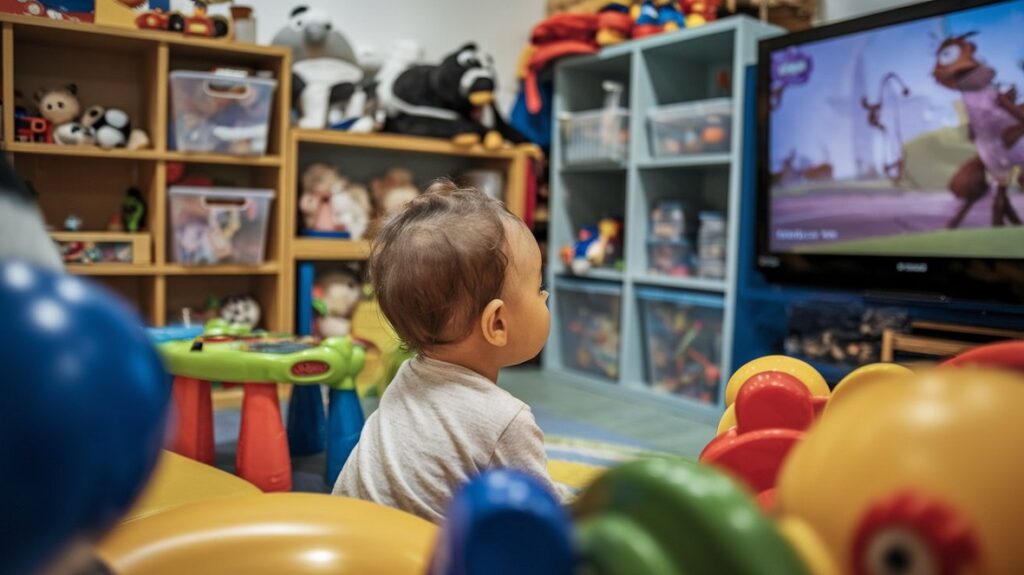
Suggested Questions:
- “What was your favorite part, and why?”
- “Was there anything that made you feel sad or happy?”
10. Summarize and Discuss What They Learned
Summarizing helps children remember and organize what they’ve learned, supporting memory and retention. At the end of a show or video, ask your child to recap the story or main points.

How-To: End each viewing session by saying, “Let’s talk about what we learned today!” This helps reinforce lessons and makes screen time feel purposeful.
11. Create a Shared Routine Around Screen Time
Establishing a consistent screen time routine can make it easier to balance digital interaction with other healthy activities. Consider setting specific times for screen time to avoid the risk of excess use.

Sample Routine:
- 10:00 – 10:30 AM: Educational show time with active involvement
- 12:30 – 1:00 PM: Outdoor play
- 3:00 – 3:30 PM: Interactive screen segment for learning numbers or colors
Parent Tip: When screen time is predictable, it reduces the chance of conflict, and children understand that other activities are equally important.
See also The Comprehensive List of 53 Low Stimulation Shows for Toddlers
12. Model Healthy Screen Habits Yourself
Kids naturally imitate their parents. If you demonstrate balanced, mindful screen habits, your child is more likely to adopt them. Avoid screens during meals, family time, and just before bed to promote healthier behaviors.

Practical Step: Establish “no-screen” zones, such as in the dining room or family room, to encourage screen-free interaction.
Conclusion
Screen time doesn’t have to be passive or disconnected. By following these 12 Screen time rules to engage with your child, you can create moments of connection and learning. Whether you’re helping your child develop language skills by narrating what’s on the screen or building fine motor skills by counting objects, screen time becomes a positive tool. Balance and moderation remain key to a healthy household environment.
By embracing screen time as an opportunity for engagement and setting up structured rules, you’re fostering healthy habits that can benefit your child’s development and your relationship.

Max William, the expert behind Home Fabo, specializes in home decorating, blending creativity with practical design solutions. With years of experience in transforming spaces, Max shares innovative tips, stylish ideas, and DIY techniques to help readers elevate their homes with ease and elegance.